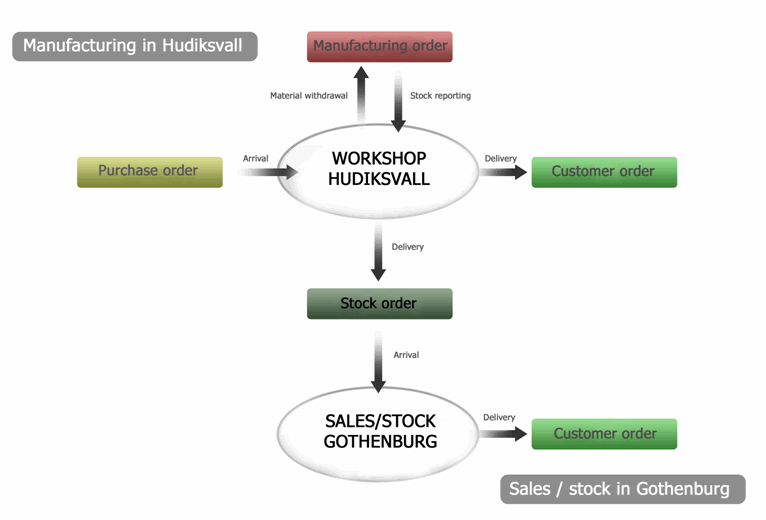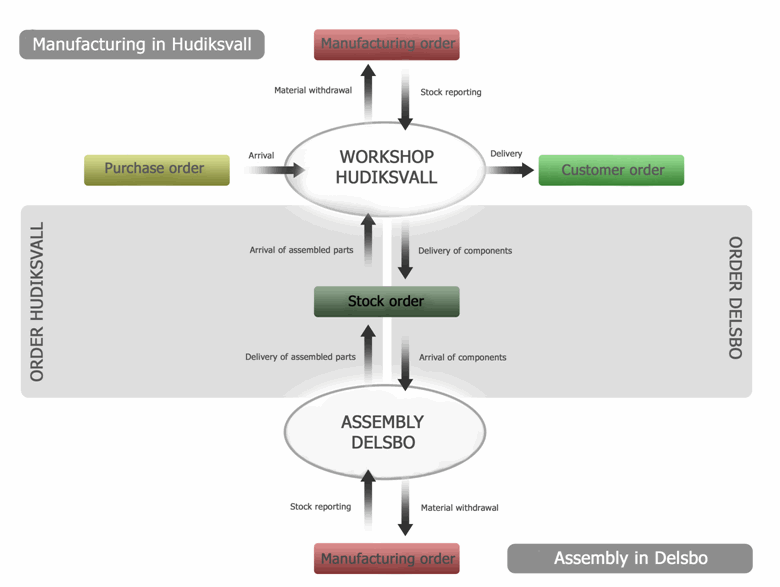
The word Warehouse is regarding a distributed storage place containing finished goods (when the warehouse is only used to "store goods"). When other operations take place at the warehouse (manufacturing etc.), then it is an Operational unit. Normally a warehouse can be called an Operational unit.
The basic definition for when to use two companies or two operational units (warehouses) is if the units form the same legal entity or not. If they are both parts of a single legal entity, the accounts payables and receivables and accounting shall be common for the company, and then it might be useful to configure two operational units/warehouses. Please remember that it might sometimes also be more convenient to configure two different companies. For example, there may be different company cultures in two companies that are merged and in that case it would not make sense to share the part register, customer register and other records.
Below you will find three different models for using Warehouse Management. The images display the order and material flow in each case.
Warehouse and Operational Unit
This example shows an operational unit, with a warehouse at another location. The operational unit carries out the purchasing, manufacturing and sales. The warehouse only manages sales. The operational unit can deliver units to the warehouse via Stock orders, which is an order type in the system which allows this kind of transfer. The warehouse only receives arrivals from the operational unit.

Example of warehouse and operational unit.
Two Operational Units - Case 1
This example shows two operational units at two locations. One of the units handles purchasing, manufacturing of semi-finished products and all of the sales. The other unit handles all the assembly of the products. Both units can deliver and receive goods to and from each other via stock orders.

Example of two operational units, case 1.
Two Operational Units - Case 2
This example shows two equal operational units that both handle purchasing, manufacturing and sales. Both units can deliver and receive goods to and from each other via stock orders. In this case, both units can create material withdrawals for manufacturing orders from either unit, but will only report to the unit to which the manufacturing order belongs.

Example of two operational units, case 2.
Read more in the chapter Warehouse Management Configurations.